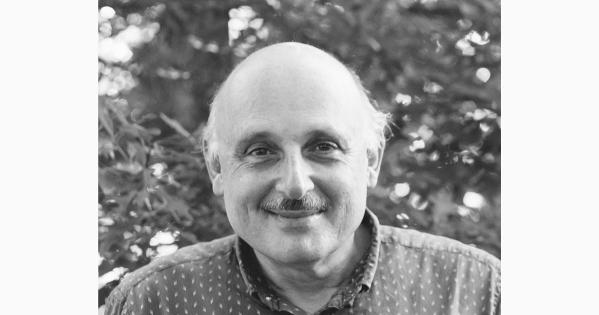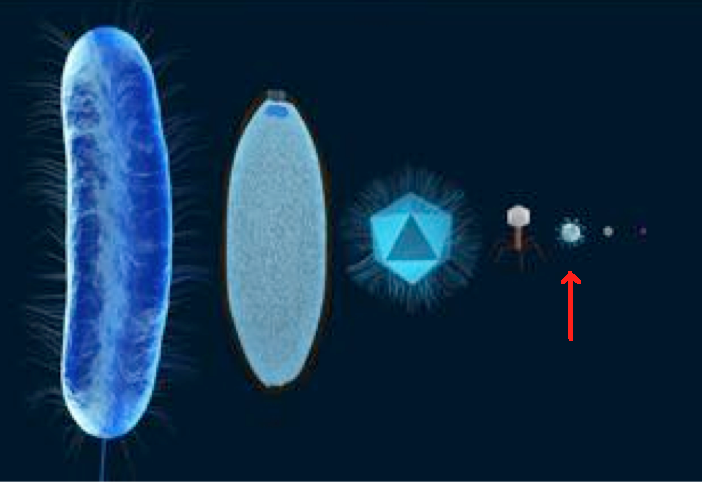Focusing on the Biology of Coronaviruses During the COVID-19 Lockdown

During a viral pandemic, scientists and science students may feel that it is their responsibility to understand how viruses cause diseases such as COVID-19. In the spring 2020 semester, I was enrolled in an advanced microbiology course, BIO-501: Mechanisms of Pathogenesis, with AU Professor of Biology Jeff Kaplan. (Pathogenesis is the process by which microorganisms cause disease.) Dr. Kaplan had taught this course three times before and had always focused mainly on bacteria, his area of expertise. When the escalating COVID-19 crisis came to affect all of us in 2020, Dr. Kaplan revised our syllabus to include a unit on virology (the study of viruses).
An Early Awareness of the Potential
Remarkably, Dr. Kaplan had brought up the possibility of a virus-inspired change in our syllabus during the first class session. At the time, few people considered the novel coronavirus to be a major threat. On March 20, 2020, Dr. Kaplan reminded his students, “I mentioned during our first class on January 13 that the lecture topics listed in the syllabus may change depending on the progression and spread of the novel coronavirus.”
The rapid devastation caused by COVID-19 motivated Dr. Kaplan’s modification of the syllabus. He had followed the news of the outbreak from its early stage in China when 44 cases had been reported and one death had been confirmed. As the number of cases and the number of deaths skyrocketed, he realized, “The global pandemic we were experiencing was an excellent opportunity to focus on the biology of coronaviruses.”
A Pandemic as a Learning Opportunity
Dr. Kaplan announced to the class on March 20, “Given the events of the past ten weeks, I would be remiss if I did not alter the lecture topics and teach more about viruses, with an emphasis on coronaviruses.” Dr. Kaplan had considerable prior knowledge of viruses and was eager to learn more. He used PubMed, a free search engine maintained by the US National Library of Medicine at the National Institutes of Health that offers access to over 30 million citations for biomedical literature. Through PubMed, Dr. Kaplan found leading-edge COVID-19 research to incorporate into his lectures. “It was easy because there was so much new information being published every day,” he said.
Between March 30 and April 30, Dr. Kaplan gave ten lectures on viruses, all of which were thorough, engaging, and thought provoking. Before describing particular classes of viruses in detail, he began with a sophisticated overview. He explained that viruses are the most abundant organisms on Earth, and that all life forms, from bacteria and fungi to plants and animals, have viruses that infect them. He emphasized that viruses have a high level of variation in characteristics such as genetic material, shape, and size.

The sizes of viruses. This scale drawing was excerpted with modification from Dr. Kaplan’s BIO-501 Lecture 11 (April 2, 2020). A bacterial cell (left) is shown next to several viruses (right) in order to compare their relative sizes. The red arrow points to the coronavirus.
An Inspiration to Students
Our class of twenty students included undergraduate biology and pre-health majors as well as master’s students in biology and biotechnology programs. We could appreciate Dr. Kaplan’s lectures because of their relevance not only to the pandemic but also to our desired careers in healthcare, research, or biotechnology. As a biotechnology MS student, I found it fascinating that the last lecture contrasted the two main categories of COVID-19 testing: PCR tests and antibody tests.
PCR tests screen for the genetic material of the COVID-19 virus, the presence of which indicates a current infection. PCR stands for Polymerase Chain Reaction. This technique quickly produces millions to billions of copies of a specific DNA sequence, which makes it easy to detect. Because the genetic material of the COVID-19 virus is RNA, not DNA, COVID-19 PCR tests require an extra step. A special procedure prepares a DNA version of the information in the viral RNA so that PCR can be performed. Diagnostic testing intrigues me. I hope to learn more about it in the future.
My former classmate Caleb Jones, MS biology ’20, praised the revised syllabus: “I thought it was helpful in terms of keeping everyone interested in the material and making the material something you couldn’t help but think a lot about because it was so in our faces, in and out of the classroom.” Virology continues to interest him: “I would always love to learn more about viruses, especially as I enter the professional world.”
The Value of Studying Viruses
During a viral pandemic, Dr. Kaplan identified the need to empower future health professionals and scientists to confront the challenges posed by deadly viruses. He created a valuable learning opportunity for his students that was uniquely meaningful in the context of the worldwide crisis. Insights into the biology of viruses can support improvements in the prevention, diagnosis, treatment, and containment of viral diseases.
I asked Dr. Kaplan whether AU could offer a course entirely on virology in the future. “This is a great idea, especially now,” he replied. “I would love to teach a course on virology, but I am retiring at the end of this year.” While his expert teaching will be missed, we wish Dr. Kaplan the best in his retirement from AU. Perhaps a continuing faculty member in the Department of Biology could teach a Virology elective. A course on such an important subject would be likely to attract many enthusiastic students.
The more we learn about viruses, the more lives we can hope to save. By teaching virology during a time of widespread fear and uncertainty, Dr. Kaplan showed our class that the quest for knowledge can be fueled by the desire to reduce the need for concern. In the wise words of Marie Curie (1867-1934), “Nothing in life is to be feared, it is only to be understood. Now is the time to understand more, so that we may fear less.”
